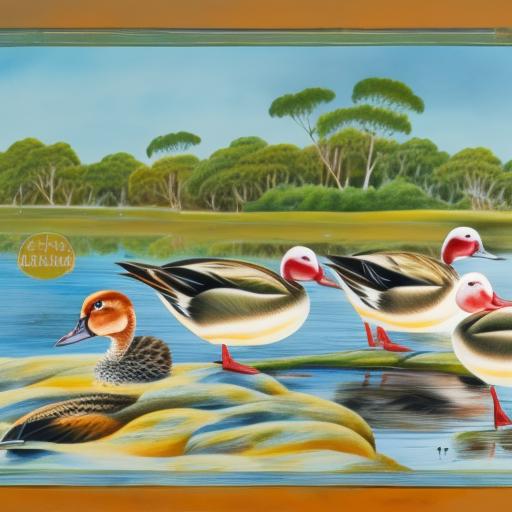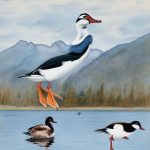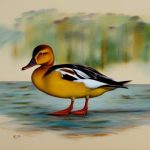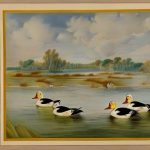Ducks have been a part of Australian agriculture for centuries, providing both meat and eggs for consumption. Australian duck breeds are known for their adaptability to the country’s diverse climate and terrain. These breeds have been developed to thrive in the Australian environment, making them a popular choice for farmers and hobbyists alike. The unique characteristics of Australian duck breeds make them a valuable asset to the country’s agricultural industry.
Australian duck breeds come in a variety of sizes, colors, and temperaments, making them suitable for different purposes. From the hardy and resilient Pekin duck to the colorful and ornamental Australian Spotted duck, there is a breed to suit every need. Whether for meat production, egg laying, or simply as a charming addition to a farm or backyard, Australian duck breeds offer a wide range of options for those interested in raising ducks.
Key Takeaways
- Australian duck breeds are diverse and unique, with a rich history and cultural significance in the country.
- Some popular Australian duck breeds include the Australian Spotted, the Australian Call, and the Australian Grey.
- Australian duck breeds are known for their hardiness, adaptability, and excellent foraging abilities.
- Australian duck breeds are used for meat, eggs, pest control, and as pets or ornamental birds.
- Proper care and maintenance of Australian duck breeds include providing a suitable living environment, balanced nutrition, and regular health checks.
Popular Australian Duck Breeds
1. Pekin Duck: The Pekin duck is one of the most popular duck breeds in Australia. Known for its large size and white plumage, the Pekin duck is primarily raised for meat production. It is a hardy breed that can adapt to various climates and is known for its fast growth rate, making it an efficient choice for meat production.
2. Australian Spotted Duck: The Australian Spotted duck is a striking breed known for its unique spotted plumage. This breed is popular for its ornamental value and is often kept for exhibition or as a pet. While not as commonly raised for meat or egg production, the Australian Spotted duck is prized for its beauty and distinctive appearance.
3. Khaki Campbell Duck: The Khaki Campbell duck is a prolific egg layer, making it a popular choice for those interested in duck farming for egg production. This breed is known for its high egg production and calm temperament, making it an ideal choice for small-scale egg production operations.
4. Indian Runner Duck: The Indian Runner duck is a unique breed known for its upright stance and distinctive walking style. This breed is popular for its egg-laying abilities and is often raised for both meat and egg production. The Indian Runner duck comes in a variety of colors, adding to its appeal as an ornamental breed.
Characteristics of Australian Duck Breeds
Australian duck breeds are known for their adaptability, hardiness, and versatility. These breeds have been developed to thrive in the diverse climate and terrain of Australia, making them well-suited to the country’s agricultural industry. From the cold winters of Tasmania to the hot and dry conditions of the Outback, Australian duck breeds are able to withstand a wide range of environmental conditions.
In addition to their adaptability, Australian duck breeds exhibit a wide range of physical characteristics. From the large size and white plumage of the Pekin duck to the striking spotted pattern of the Australian Spotted duck, these breeds offer a diverse array of options for farmers and hobbyists. Whether raised for meat production, egg laying, or ornamental purposes, Australian duck breeds provide a variety of choices to suit different needs.
Furthermore, Australian duck breeds are known for their calm temperament and ease of handling. This makes them an ideal choice for those new to duck farming or those looking for low-maintenance livestock. Their docile nature also makes them suitable for interaction with children and as pets on small farms or homesteads.
Uses of Australian Duck Breeds
Australian duck breeds are valued for their versatility and usefulness in various agricultural settings. The primary uses of these breeds include meat production, egg laying, and ornamental purposes.
Meat Production: The Pekin duck is particularly prized for its fast growth rate and large size, making it an efficient choice for meat production. Its adaptability to different climates also makes it a popular choice for farmers across Australia.
Egg Laying: The Khaki Campbell duck is renowned for its high egg production, making it an ideal choice for those interested in duck farming for egg production. Its calm temperament and ease of handling also make it a popular choice for small-scale egg production operations.
Ornamental Purposes: The Australian Spotted duck and Indian Runner duck are popular choices for ornamental purposes due to their unique and striking appearances. These breeds are often kept for exhibition or as pets on small farms or homesteads.
Care and Maintenance of Australian Duck Breeds
Proper care and maintenance are essential for ensuring the health and well-being of Australian duck breeds. Providing adequate shelter, nutrition, and healthcare are key components of responsible duck ownership.
Shelter: Ducks require shelter that protects them from the elements and predators. A well-ventilated coop or shelter with access to clean water and bedding is essential for keeping ducks healthy and comfortable.
Nutrition: A balanced diet is crucial for the health of ducks. A diet consisting of commercial duck feed supplemented with fresh greens, grains, and occasional treats will help ensure that ducks receive the nutrients they need to thrive.
Healthcare: Regular health checks and vaccinations are important for preventing diseases and maintaining the overall well-being of ducks. Additionally, providing access to clean water for swimming and grooming will help keep ducks healthy and happy.
Breeding and Rearing Australian Duck Breeds
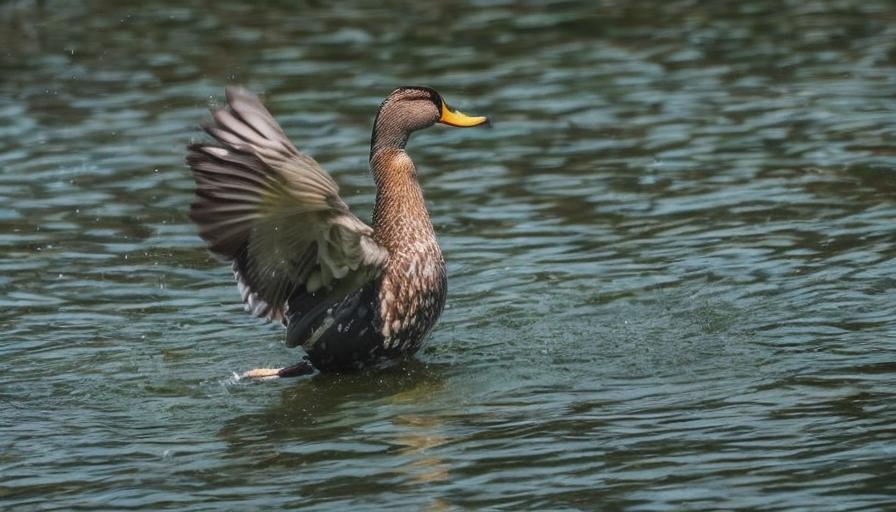
Breeding and rearing Australian duck breeds requires careful planning and attention to detail. Selecting breeding stock with desirable traits, providing proper nutrition and care during the breeding process, and ensuring the health and well-being of ducklings are all important considerations.
Breeding Stock: Selecting healthy breeding stock with desirable traits such as good conformation, temperament, and productivity is essential for producing high-quality offspring. Breeding stock should be free from genetic defects and have a proven track record of performance.
Breeding Process: Ducks should be provided with a suitable environment for breeding, including access to nesting areas and privacy. Proper nutrition and care during the breeding process will help ensure successful mating and healthy offspring.
Rearing Ducklings: Providing proper nutrition, warmth, and protection from predators are essential for rearing healthy ducklings. Ducklings should be provided with access to clean water for swimming and grooming as they grow.
Conservation Efforts for Australian Duck Breeds
Conservation efforts play a crucial role in preserving the genetic diversity of Australian duck breeds. By promoting responsible breeding practices, maintaining accurate breed registries, and raising awareness about the value of these breeds, conservation efforts help ensure that Australian duck breeds continue to thrive for future generations.
Responsible Breeding Practices: Breeders can contribute to conservation efforts by selecting breeding stock with desirable traits and avoiding inbreeding. By maintaining genetic diversity within each breed, breeders can help preserve the unique characteristics of Australian duck breeds.
Breed Registries: Accurate breed registries provide valuable information about the lineage and genetic diversity of Australian duck breeds. By maintaining detailed records of breeding stock and offspring, breed registries help ensure that genetic diversity is preserved within each breed.
Awareness: Raising awareness about the value of Australian duck breeds can help promote their conservation. Educating the public about the unique characteristics and uses of these breeds can help foster appreciation and support for their preservation.
In conclusion, Australian duck breeds offer a wide range of options for farmers and hobbyists interested in raising ducks. From their adaptability to diverse environmental conditions to their versatility in meat production, egg laying, and ornamental purposes, these breeds play a valuable role in Australia’s agricultural industry. By promoting responsible care, breeding, and conservation efforts, we can help ensure that Australian duck breeds continue to thrive for future generations.
If you’re interested in learning more about Australia duck breeds, you might also want to check out this informative article on what to feed ducks. It provides valuable insights into the dietary needs of ducks and how to ensure they are properly nourished. Understanding the nutritional requirements of ducks is essential for their health and well-being, making this article a valuable resource for duck enthusiasts.
FAQs
What are some popular duck breeds in Australia?
Some popular duck breeds in Australia include the Pekin, Khaki Campbell, Indian Runner, and Muscovy.
What are the characteristics of the Pekin duck breed?
Pekin ducks are known for their white feathers, orange bills, and calm temperament. They are a popular choice for meat production.
What are the characteristics of the Khaki Campbell duck breed?
Khaki Campbell ducks are known for their khaki-colored feathers, prolific egg-laying abilities, and friendly disposition.
What are the characteristics of the Indian Runner duck breed?
Indian Runner ducks are known for their upright posture, excellent foraging abilities, and high egg production.
What are the characteristics of the Muscovy duck breed?
Muscovy ducks are known for their unique appearance, including a red facial caruncle and a quiet, docile nature. They are also valued for their meat production.
What are some considerations for raising ducks in Australia?
When raising ducks in Australia, it’s important to provide them with access to clean water for swimming and foraging, protection from predators, and appropriate shelter from the elements. Additionally, it’s important to be aware of any local regulations or restrictions regarding the keeping of ducks.
Meet Walter, the feathered-friend fanatic of Florida! Nestled in the sunshine state, Walter struts through life with his feathered companions, clucking his way to happiness. With a coop that’s fancier than a five-star hotel, he’s the Don Juan of the chicken world. When he’s not teaching his hens to do the cha-cha, you’ll find him in a heated debate with his prized rooster, Sir Clucks-a-Lot. Walter’s poultry passion is no yolk; he’s the sunny-side-up guy you never knew you needed in your flock of friends!

